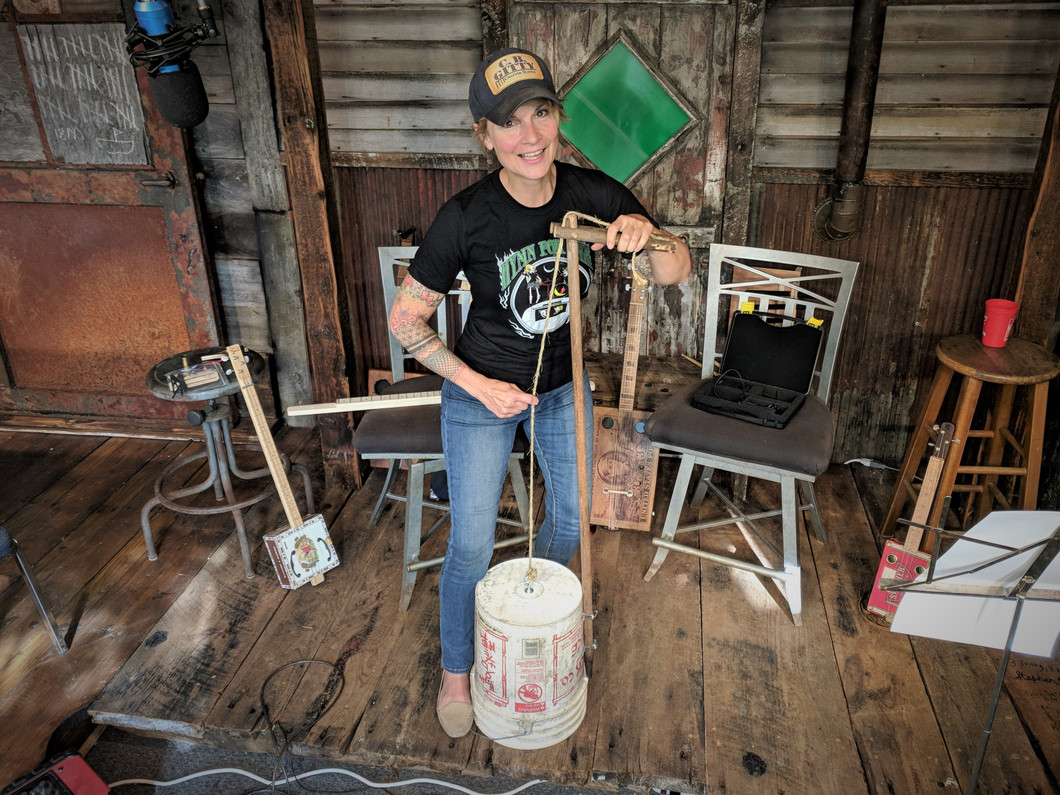5-Gallon Bucket Bass: A Simple One-String Bass Builder's Diary
It doesn't take much to make a musical instrument.
You can sandwich an elastic band between two popsicle sticks to make a kazoo.
You can even bang two rocks together to hold a beat.
But what about crafting a single-string bass from a 5-gallon bucket and other cast-off objects?
Well, that's exactly what you'll see here.
Using a grimy bucket rescued from a burned-down restaurant, two broom handles used to sweep an old factory floor, and a handful of miscellaneous bits, a single-string, 5-gallon bucket bass was made.
Materials Used
--> 2 four foot broom handles
--> 1 five-gallon bucket
--> sisal rope
--> 2 hose clamps
--> 1/4“ oak dowel
--> 1 eye bolt
--> 2 fender washers
--> 2 nuts
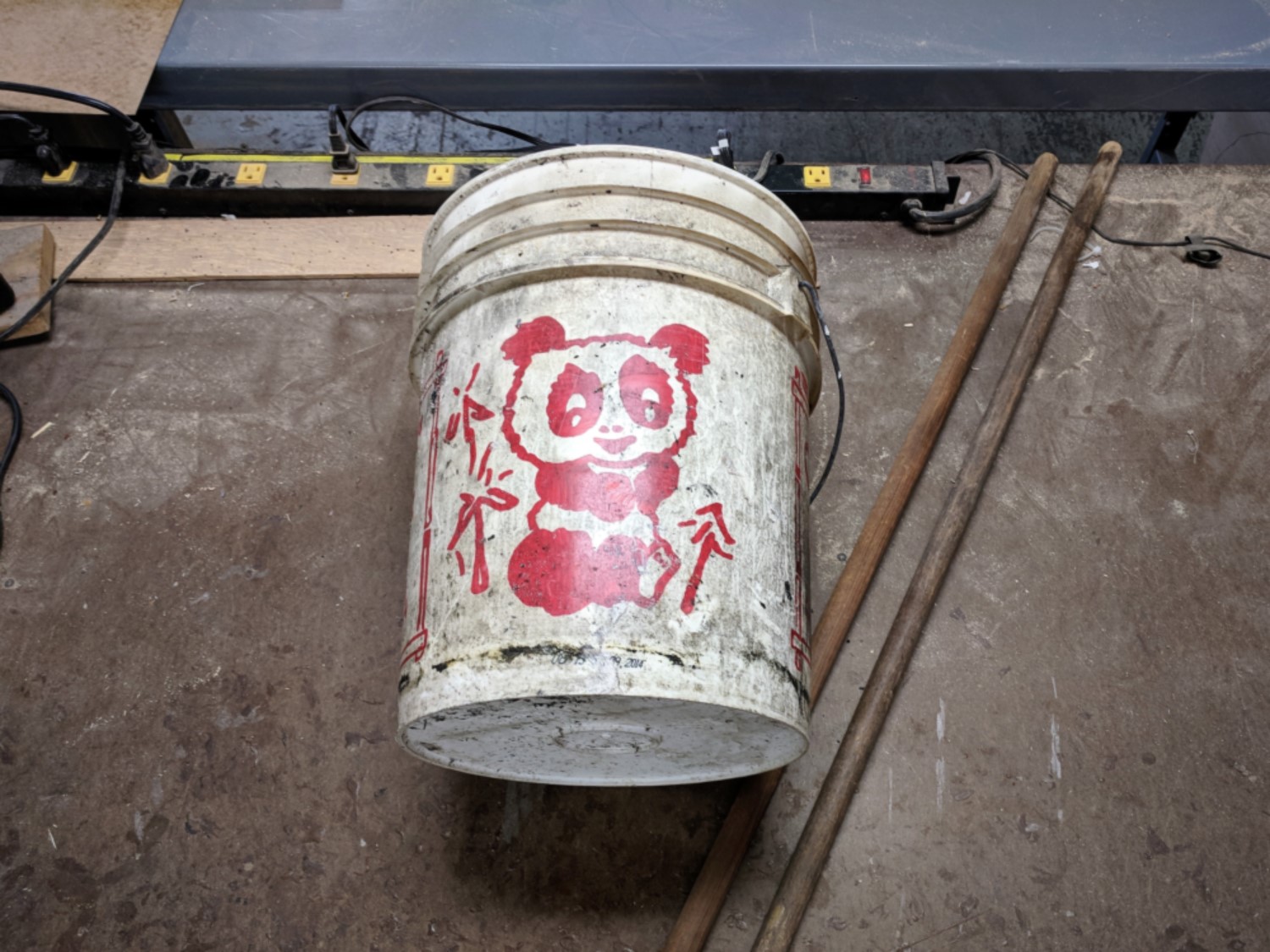
Inspiration For Design
Inspired by whamolas -- single-string musical instruments that have a lever system to change string tension and pitch -- this bucket bass, unlike conventional gut buckets and washtub basses, has a lever-handle attached.
Similar to a whamola, the lever changes the note played on the plucked rope.
Neck And Handle
Often, traditional gut-bucket necks are what move to increase or decrease string tension, thereby increasing or decreasing the pitch of the note played.
Having a second broom handle to build with, this whamola-inspired design allowed for a lever to attach atop a stationary neck.
So, for the lever, one broom handle was cut into two 12” pieces.
The other 4 foot handle remained intact to serve as the neck.
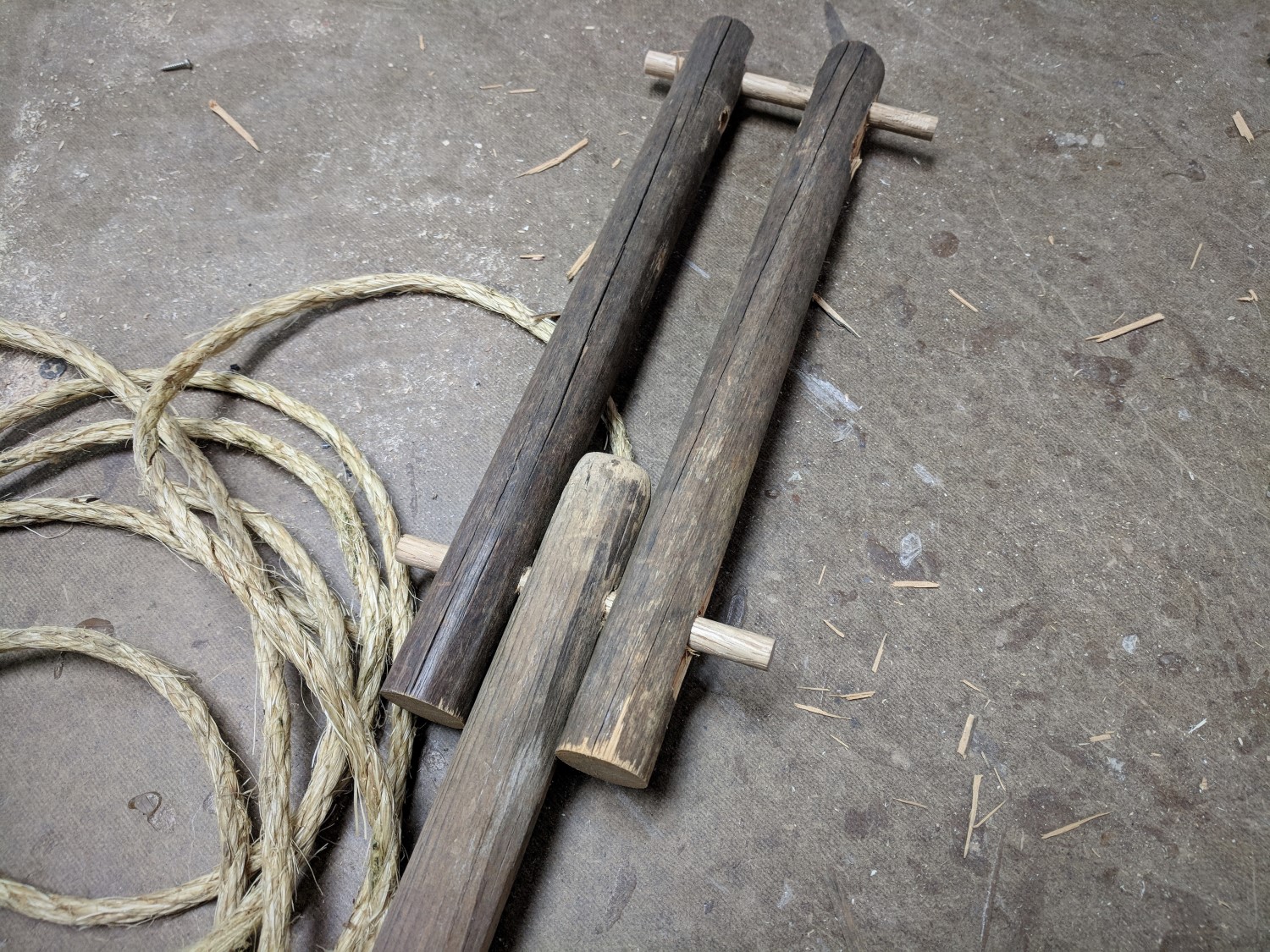
Since the two-piece lever-handle would be fashioned on opposite sides of the neck, something was needed to connect those two pieces to the neck, and to each other.
Keeping with the rustic, folk-art instrument look, two 4 inch pieces of ¼ inch oak dowel were cut to connect the handle together.
Matching inline ¼ inch holes were drilled through the handle pieces and neck, and the dowels were used to connect the assembly.
With the lever assembled, one end of the rope had a place to be tied, leaving the other end to attach to the bucket.
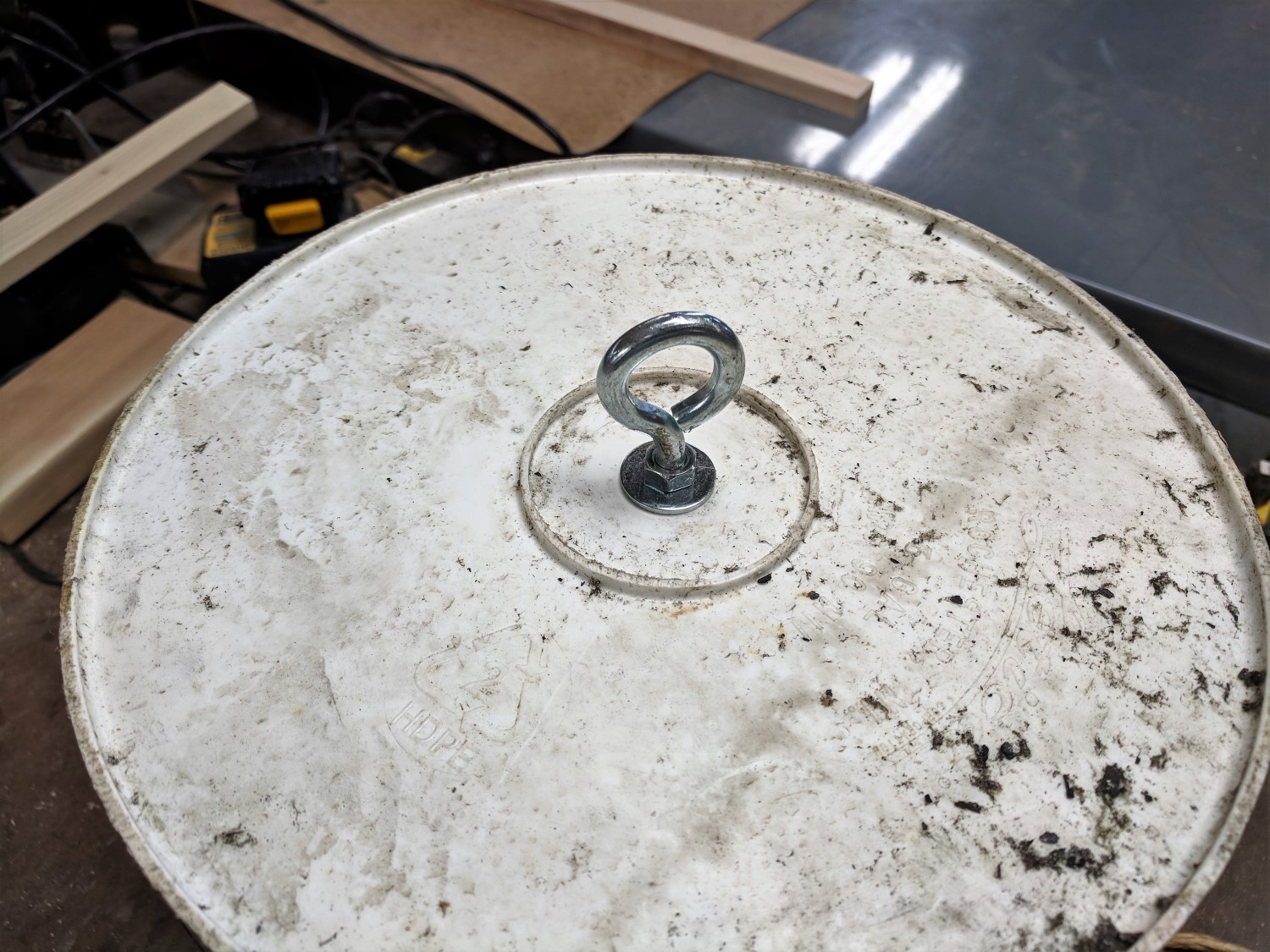
Attaching Neck And Rope To Bucket
Out in the Gitty shop, likely similar to your own, there are containers of random bits: screws, bolts, wire, nails, nuts and a mish-mash of assorted hardware.
These grab-bags are a wealth of useful items waiting to be given new life.
And in a project like this, those random bits are what bring the whole build together.
From those random bits came the eye bolt, washers, nuts, and hose clamps.
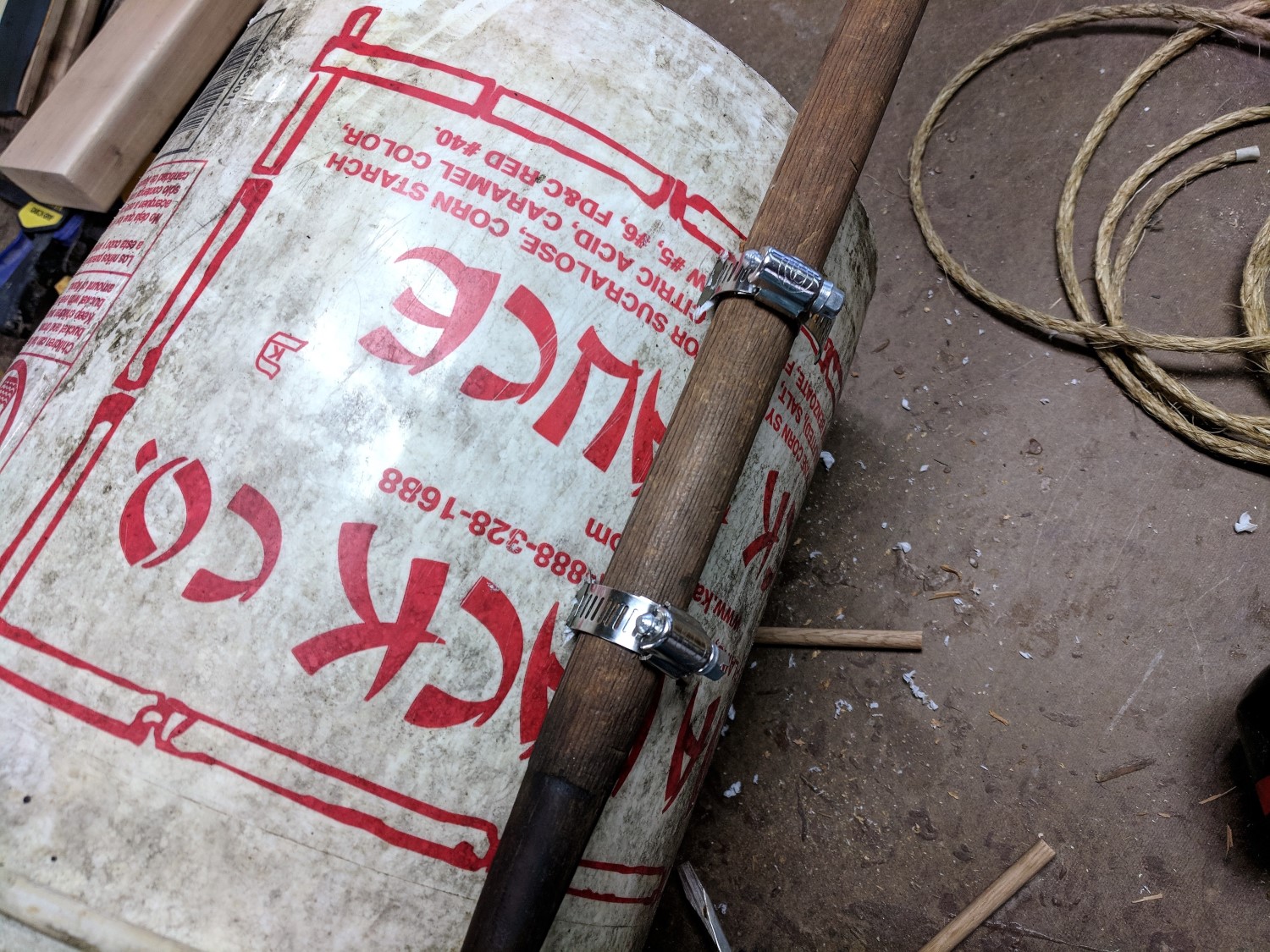
The eye bolt inserted through a hole drilled dead-center in the bucket bottom, fastened with washers and nuts, provided the anchor to attach the loose rope-end to the bucket.
Two hose clamps fed through slots cut in the bucket with a razor knife anchored the neck.
I tied the rope to the eye bolt and lever, stepped back and...
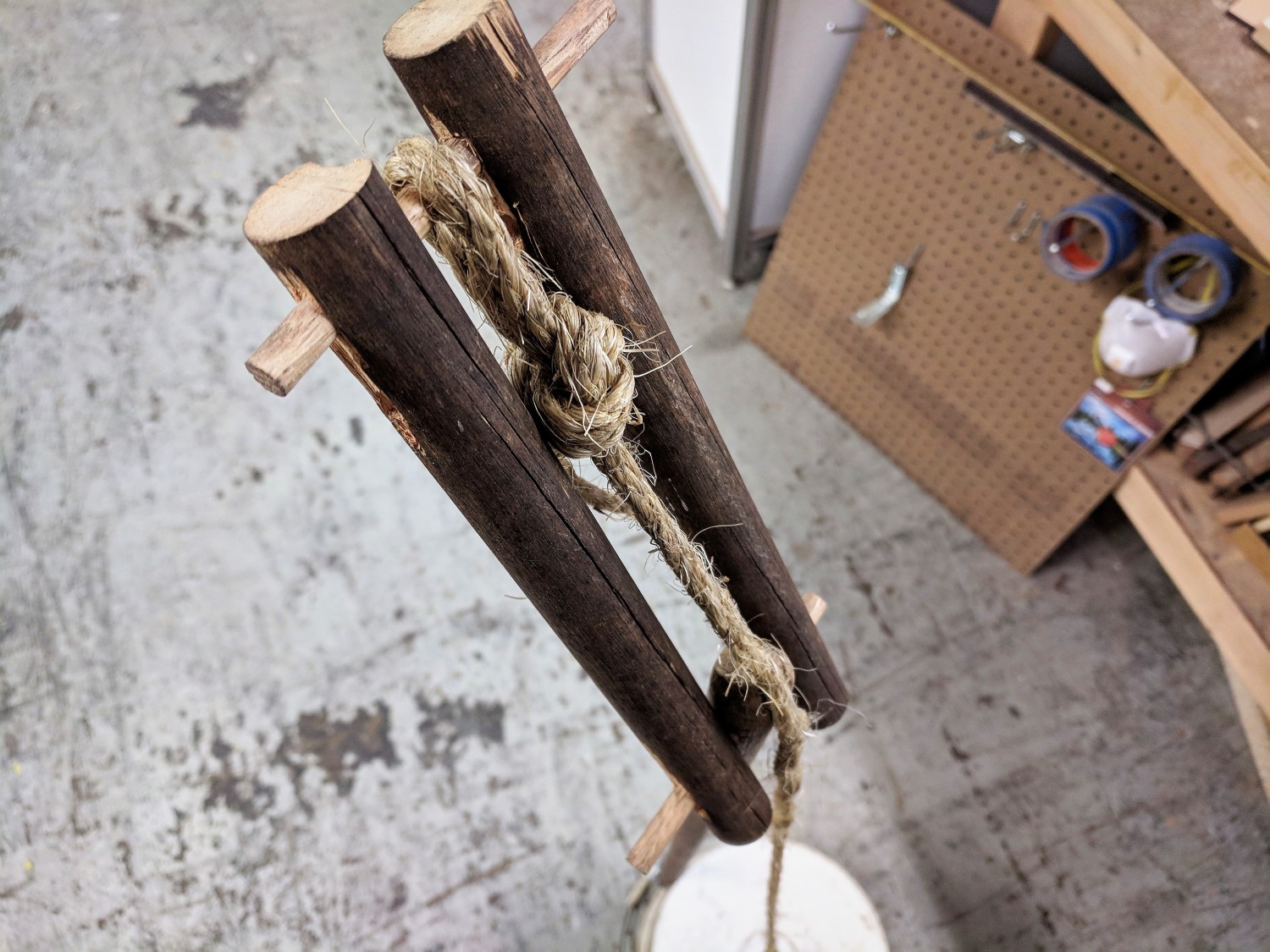
... an awesome 5-gallon bucket bass was born!
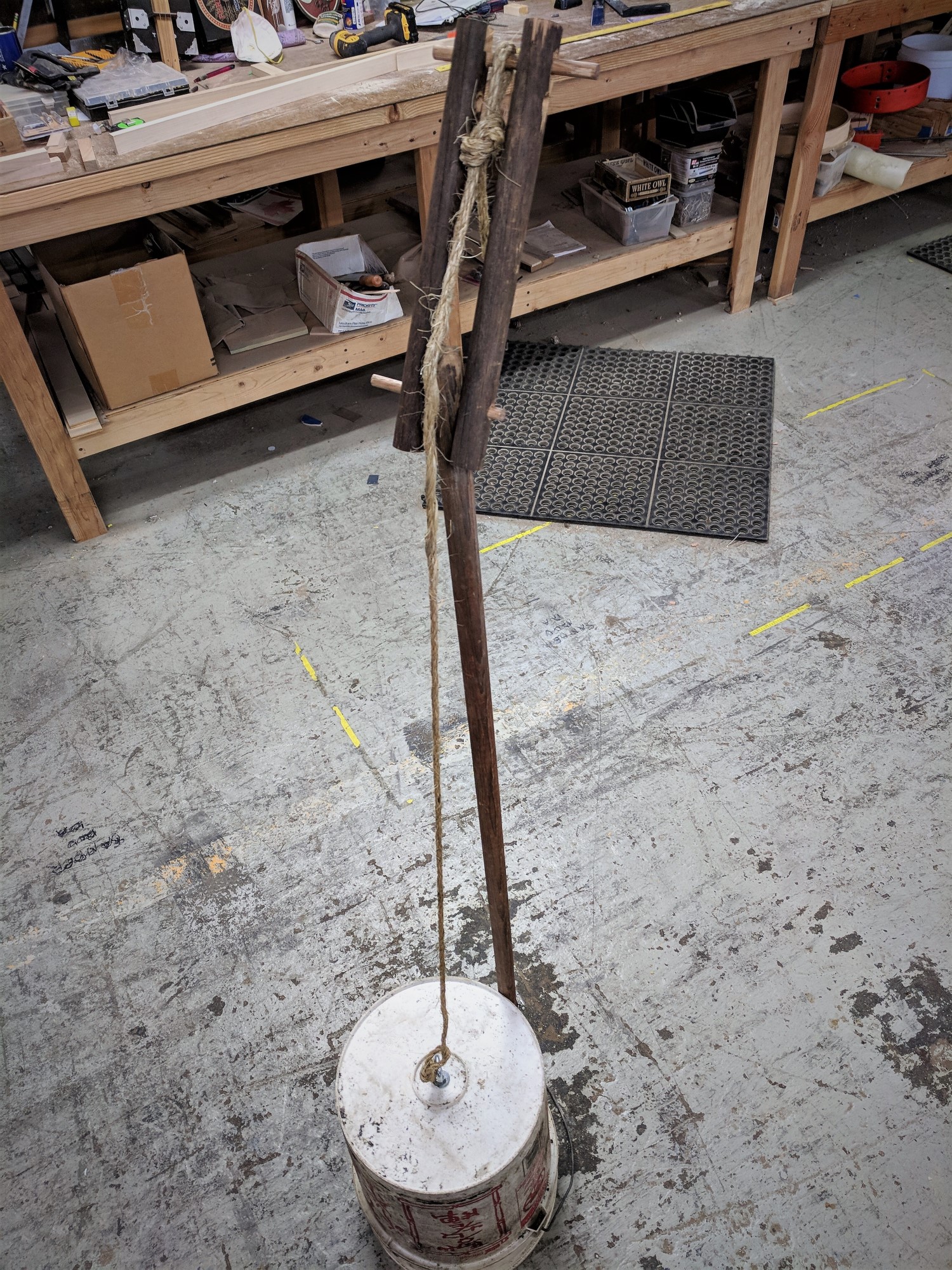
The Wrap-Up
So as you can see, it really doesn't take much to make a fun, fully-playable musical instrument.
As is the case with this gut bucket bass, sometimes the simplest of handcrafted folk-art provides the most joy to a builder.
With a handful of random hardware, some out-of-the-box thinking, and a willingness to have fun, you too can craft your own awesome gut bucket bass.
What will you use to build your gut bucket bass?
Recent Posts
-
2024 World's Wildest Electric Cigar Box Guitar Build-Off Winners!!!
C. B. Gitty Crafter Supply is proud to announce the winners of the 2024 "World's Wildest Electric Ci …31st Oct 2024 -
Improved C. B. Gitty: Easier Than Ever! (Work in Progress)
Ben “Gitty” has been cleaning house, making our website even easier find your favorite parts, kits a …7th Oct 2024 -
Build-Off Contest 2024: The World's Wildest ELECTRIC Cigar Box Guitar
CBGitty.com is looking for the WILDEST, LOUDEST & MOST DIABOLICAL electric cigar box guitar ever …6th Sep 2024

